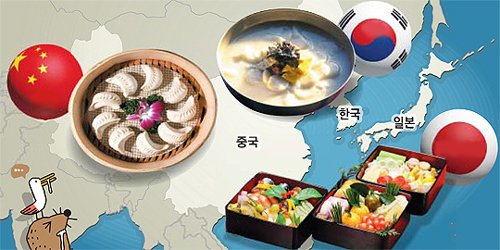How Korean New Year Traditions Differ from Neighbors'
Published on | Source
Korea, China and Japan share some traditions, but each has also each developed its own distinctive traditions for the Lunar New Year.
Advertisement
People in Korea and China prepare food for an ancestral memorial service, and uniquely in Korea children perform a ceremonial bow to their elders and often get a cash gift in return.
Koreans also celebrate the day by sharing a meal of tteokguk or rice cake soup with their family. Pheasants were once thought best ingredient to make the soup, but since they are hard to get hold of, many had to use chicken instead. These days, poultry has been replaced by beef.
Seasonal customs include making bokjori or rice strainers, or flying a kite, and a board game played by tossing four sticks (yut-nori). Bokjori are believed to bring prosperity while driving away evil spirits if hung at an entrance of the house when the New Year starts.
In China, the Lunar New Year is officially a weeklong holiday, but some firms allow their employees to have 15 to 30 days off so as they can visit their ancestral hometowns, which can take days to reach.
Like Koreans, Chinese also pay homage to their ancestors and exchange the New Year's greetings. Red envelopes with money are given to children because the color is thought to bring good fortune.
Also, families gather to make dumplings and insert a coin in some of them. It is said that those who find a coin in their dumpling will make big money in the new year.
Japan is different from its two neighboring countries as it observes the solar New Year. Only Jan. 1 is an official holiday but most firms extend it to three days. On the first day of the new year, the Japanese visit a shrine in their neighborhood to make a new year's wish.
They also celebrate the day with a soup with rice cake and other ingredients.
